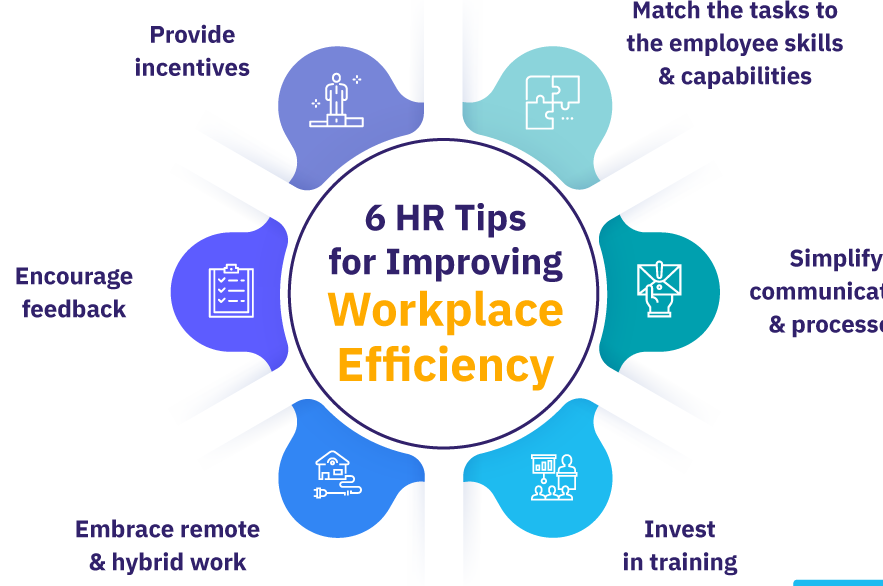Human resources (HR) is a vital department within an organization, and one of its key responsibilities is to increase workplace efficiency. Efficiency is a crucial factor in the success of any organization, as it allows companies to optimize their resources and achieve their objectives in a timely and cost-effective manner. In this article, we will explore how HR can improve workplace efficiency by implementing specific strategies.
- Streamline HR processes:
One of the main roles of HR is to manage various processes that are essential for the functioning of the organization. These processes can include recruitment, onboarding, performance reviews, and employee data management. However, many of these processes can be time-consuming and inefficient, which can lead to increased costs and reduced productivity. By identifying and streamlining inefficient processes, HR can save time and reduce errors.
For example, HR can automate some of these processes, such as the onboarding process, by using technology. Automated onboarding can provide new employees with all the information they need to start their jobs, including company policies, benefits, and training materials. Automating other processes, such as performance reviews and employee data management, can also save time and reduce errors.
- Develop training and development programs:
Another way HR can increase workplace efficiency is by designing and implementing training and development programs. These programs can help employees improve their skills and become more efficient in their roles. Training programs can also help to identify knowledge gaps and provide employees with the necessary tools to address these gaps.
HR can work with managers and department heads to identify training needs and develop customized programs that meet the specific requirements of each team. These programs can range from basic skills training to advanced courses that focus on specialized areas of the business. By investing in employee development, HR can help to create a more skilled and productive workforce, which can have a positive impact on the organization’s bottom line.
- Encourage employee engagement:
Employee engagement is another critical factor that can affect workplace efficiency. Engaged employees tend to be more productive and committed to their work. They are also more likely to contribute to the overall success of the organization.
HR can foster a culture of employee engagement by providing opportunities for feedback, recognition, and communication. HR can encourage managers to recognize and reward employees for their achievements and create a positive work environment. By involving employees in decision-making processes, HR can also improve engagement and create a sense of ownership among the workforce.
- Develop and implement performance metrics:
Performance metrics are essential for measuring workplace efficiency and identifying areas where improvements can be made. HR can work with managers and department heads to establish performance metrics that track employee productivity and identify areas where improvements can be made. These metrics can include employee turnover rates, absenteeism rates, and productivity levels.
By analyzing this data, HR can identify trends and make informed decisions about resource allocation. For example, if the data shows that a particular team is experiencing high levels of absenteeism, HR can investigate the root cause of the problem and develop a strategy to address it. Performance metrics can also be used to identify training needs and provide employees with the necessary tools to improve their productivity.
- Offer flexible work arrangements:
Finally, HR can increase workplace efficiency by offering flexible work arrangements. This can include remote work or flexible scheduling. Flexible work arrangements can help employees better manage their work-life balance, reduce stress, and improve overall productivity.
HR can work with managers to establish policies that allow for flexible work arrangements while ensuring that productivity levels are maintained. For example, HR can set specific goals and deadlines for


